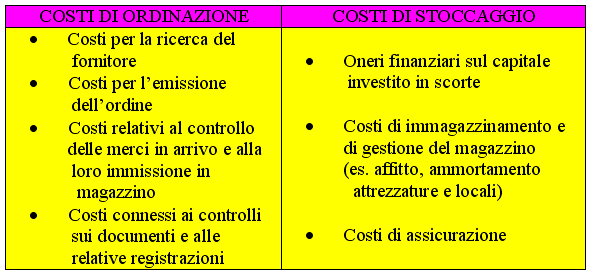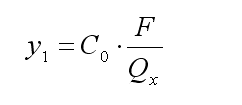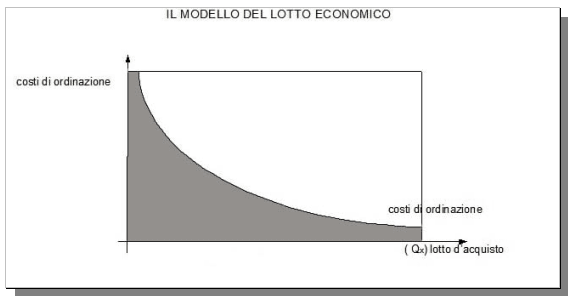
CHAPTER I: THE WAREHOUSE
1.4.0 THE MANAGEMENT FINANCIAL INSTITUTION OF THE SUPPLYES
The main objective of the management financial institution of the supplyes of warehouse and that one
to render minimums the regarding costs the acquisition and I use it of the same supplyes.
In connection with their origin
they exist you vary types of supplyes: the technical supplyes or work them and the speculative supplyes.
First they are those connected to the resolution of the problem sincronizzare several the business processes.
The second ones are those that derive from opportunity that the enterprise has picked in the purchase markets.
To the aim to render the relationship between costs and level of service optimal (satisfaction of the question) the management
is held to pursue 3 important objects to you: a productive objective, that is to guarantee the continuity and the regular
in the flow of the materials; a objective financial, that is to maintain to bottoms the volumes and the lay time (immobilizes)
of the supplyes; an economic objective, that is to engage lessened the spaces and the resources assigned to the mobing.
At least two alternatives of management exist that satisfy in various measure such object to you: c.d. the management to
supply, in which the levels of supply¹
are determines to you based on the historical consumptions; c.d. the management to
requirementses² , in which the levels of supply are determines to you based on the order forecasts.
The characteristic parameters of the so-called management to supply are substantially: the economic lottery of purchase (LEA),
that one of production (LEP), the levels of the supply of emergency (SS) and the point of I reorder (PRM), beyond naturally to
ties of ability to the warehouse.
The approach mainly diffused to business level inherent to the location of the amount to acquire is
represented from the "economic lottery of purchase", also said optimal lottery of supplying.
The economic lottery of purchase
is the amount of goodses or materials that every time is opportune to order in order to render the combination of the costs minimal
totals that the enterprise must support for their supplying (costs of order) and that refers to the conservation of the
warehouse supplyes (stock costs). Analyzing to these two members it can be comprised as from "simple" the objective to
diminish the costs it is come to determine the "economic lottery of purchase".
The costs of order (or operating costs of the orders) are tendentially fixed costs since they do not depend on the entity
of the single order. The relative costs you to the emission of the order and those for the successive control of the invoice do
not change are that one is acquired single unit of one given goods or that if of it acquires 1000 units.
The stock costs, also sayings cost of maintenance of the supplyes, are of the variable costs, that is directly correlate to
you to the volumes of the supplyes. To hold account that greater they are the times of permanence of the goodses in warehouse,
greater is the costs connected to the interests on the invested them understood one, to the risk of eventual
damages, ruin, obsolescences ... Of continuation filler a table in which the various costs of order and stock are
reassumed.

1.4.2 ORDER COSTS
The order costs are constituted give:

In which we indicate with:

As it can be noticed the curve of the order costs has a decreasing course.
In how many such costs they are represents you for more from fixed costs (independent from the tidy amount); therefore their
annual total diminishes to diminishing of the number of the orders.
After all, greater it is Qx, minor will be y1.
| Top | Summary | < < Previous | Next > > /en/home.php" TARGET="_blank">>> Home Page << |